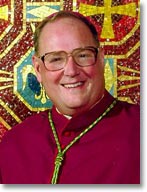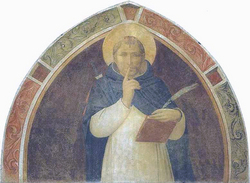Dear Friends united in love and service of Jesus Christ and His Church:
The Church is one big leper colony! You heard me right. All of us in the Church are lepers! My mind is still on last Sunday’s Gospel when Jesus healed the leper.
 Jesus, the Divine Physician, often cleansed lepers of their hideous disease. It was thought incurable then. It was so dreaded that lepers had to live together in colonies where they could at least welcome and care for one another. There, they were all alike. There, they were all lepers.
Jesus, the Divine Physician, often cleansed lepers of their hideous disease. It was thought incurable then. It was so dreaded that lepers had to live together in colonies where they could at least welcome and care for one another. There, they were all alike. There, they were all lepers.
Our Lord, of course, knows that there is also a spiritual leprosy, a leprosy that affects the soul, a moral disease, called sin. He can and will cure that, too, if, like the leper in last Sunday’s gospel, we ask Him to do so.
Those who realize they have this interior leprosy come together in a leper colony, called the Church. The Church is filled with spiritual lepers who welcome one another, care for one another, and turn to Jesus, the Divine Physician, for cleansing, through prayer, worship, and the sacraments.
The Church is then a hospital for the sick, not a country club for the spiritually sleek. We belong to the Church, not because we’re saints, but because we’re sinners, not because we’re proud, but because we’re humble, not because we want to do God a big favor, but because we need a big favor from God.
Not long ago a high school junior, preparing for the sacrament of confirmation, wrote me: “Archbishop Dolan, I hate going to Sunday Mass. All I see around me are hypocrites, two-faced people who act holier-than-thou on Sunday, and then put everybody else down all week.”
I wrote him back, “You’re right. And now there’s one more hypocrite among them on Sunday morning — you, because you just judged all of them, dismissed them, and considered yourself holier-than-them. So, welcome to the Church! You’re one of us.”
Sure, there are a lot of saints in the Church. But, odds are, if you told them you thought them a saint, they’d be the first to tell you they were only recovering sinners.
You have heard me talk before about my beautiful niece, Shannon. When she was eight, she was diagnosed with perilous bone cancer. Odds were she would loose her leg, maybe her life. Her major worry, though, was that she would loose her hair, and her friends, who might, she was afraid, shun her because she was bald and had cancer.
During her surgeries and chemo, her third grade classmates made and sold what they called “Shannon caps,” stocking caps with her name on it. The benefits helped cover some of her expenses.
When the day came when she could finally return to school, she was scared. Would the kids welcome her? Would they make fun of her, bald, in a wheelchair, with that dreaded disease of cancer? She wore her “Shannon cap” to cover her cue-ball head.
When her dad pushed her into the third grade classroom, every child, and the teacher, were wearing a “Shannon cap”. They all stood and cheered. Shannon smiled. She was back home among friends.
That’s the Church . . . we’re all lepers . . . we’re all unclean . . . we all need the only one who can heal us. We’re all in it together.
 See you at Mass.
See you at Mass.
Archbishop Timothy M. Dolan
The Journal Times.com
February 17, 2009







